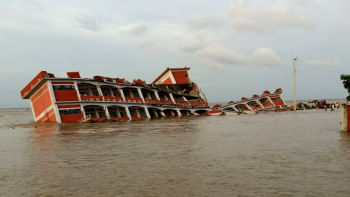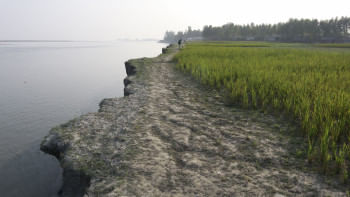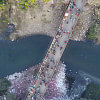An entire upazila haunted by erosion

It is shocking that around 70 percent of the land in Sirajganj's Chowhali upazila has been lost to river erosion in the last 20 years, leaving around 50,000 people from 50 villages homeless, according to a report in this daily. While many of the villagers have been forced to move to other locations, those who remain are often being deprived of basic facilities. This is because the Jamuna has not only washed away their homesteads, but also damaged road communications, affected agricultural production and trade, and even deprived many children of access to education.
Reportedly, at least 100 of the 128 government primary schools in the upazila were affected in recent times, with 80 of them relocated multiple times. This has led to a significant rise in the dropout rate – while there were some 32,000 primary students in the 2017-2018 academic session, the number has fallen to 24,000 this session, according to the upazila education officer. Besides, the buildings of most government offices, including health and UNO offices, have been lost to river erosion, with the offices now operating in makeshift structures. For instance, the UNO office is being run from a college building. Under the circumstances, villagers are not getting proper access to essential services, including healthcare facilities. We wonder what future awaits them if the government does not come up with a sustainable plan to tackle river erosion and help the victims recover.
So far, government measures to prevent erosion have been restricted to sandbag dumping only. We must ask, is this all that the government can do when an entire community is at risk of destitution? While the plan to construct a permanent embankment in the area may be a solution for the time being, whether that will be sustainable in the long run remains to be seen. According to one river expert, building embankments and hard structures to stop river erosion is the wrong way to go in countries like Bangladesh. Such Western-originated approaches have proven to be ineffective in many cases. Therefore, the government must consult with local river experts and find a sustainable way of river management which will also reduce river erosion significantly.


 For all latest news, follow The Daily Star's Google News channel.
For all latest news, follow The Daily Star's Google News channel. 









Comments